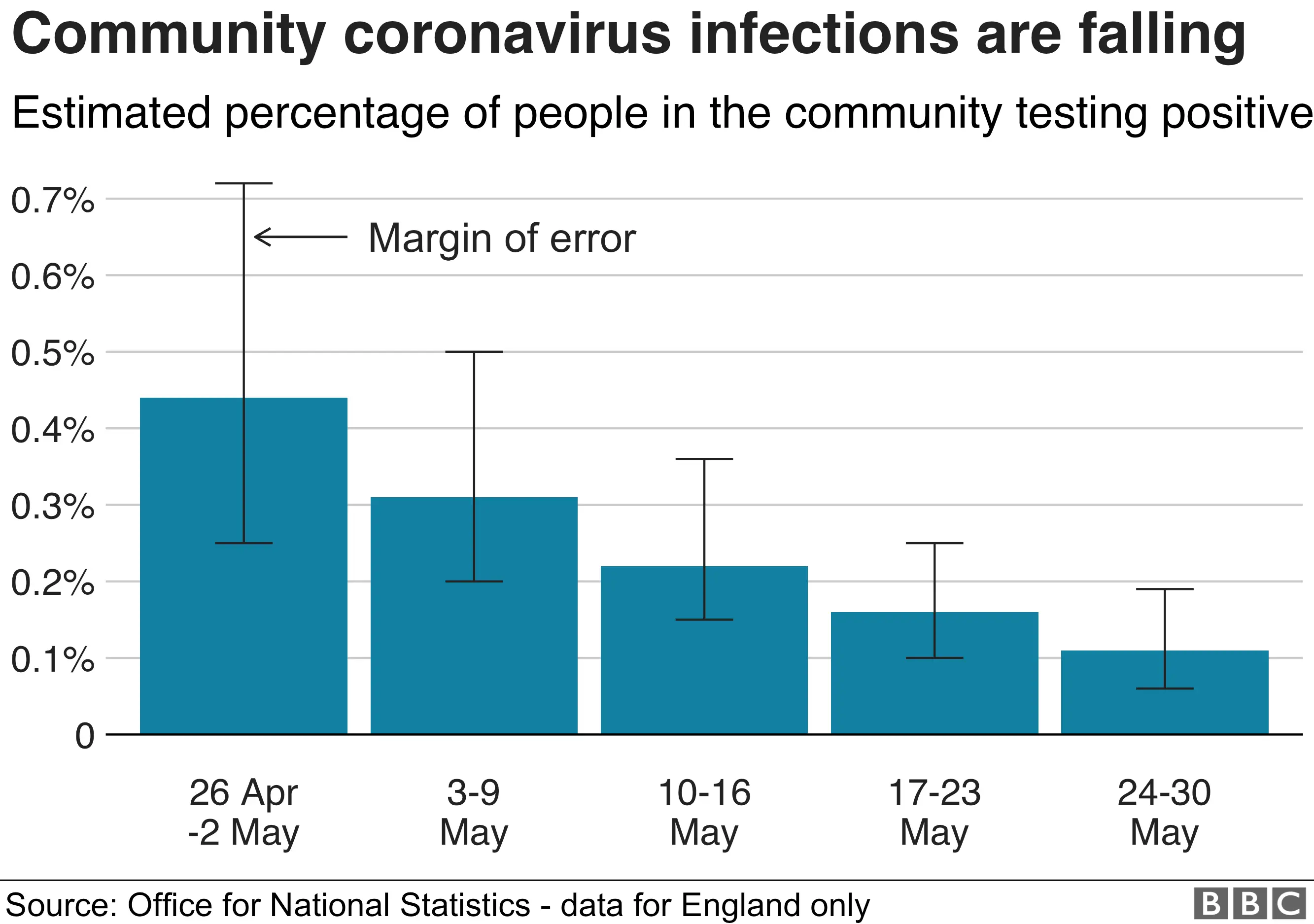Virus cases down to 5,600 a day, household survey suggests
 Getty Images
Getty ImagesThe number of people infected with coronavirus in homes in England has fallen to 5,600 a day, from 8,000 last week, statisticians suggest.
The estimate is based on swab tests of 19,000 people in 9,000 households by the Office for National Statistics.
Some scientists have said reaching a low level of cases is key to easing the lockdown further.
Test and trace programmes were introduced in England and Scotland last week to track contacts of new cases.
The ONS study of adults and children in private households suggests there are 39,000 new infections a week on average in England.
It estimates that one in 1,000 people had coronavirus in the community between 17 and 30 May, not counting those staying in hospitals or care homes.
This is down from the previous estimate of one in 400.

The figures for England are based on a small number of positive swab tests - 21 people in 15 households - so there is some margin for error.
But because everyone in the household is tested, whether they have symptoms or not, the results are thought to be a more accurate picture of how many people are currently infected by the virus.
There is a delay between changes in people's behaviour and the number of people infected, so it may take several more weeks of results to work out the real impact of lockdown measures being eased.
The 'R' number - the number of people that one infected person will pass the virus on to, on average - is unchanged at between 0.7 and 0.9 in the UK. When it's below 1, the epidemic is shrinking rather than growing.
At the start of the epidemic, the 'R' number was nearly three.
Positive tests down
Based on last week's ONS estimate of 8,000 daily infections, some scientists advising the government warned against relaxing lockdown measures too quickly.
They said waiting until cases fell further would make the virus easier to control, and give test and trace programmes more chance of succeeding.
On the basis of this study, "the number of people in England testing positive has decreased in recent weeks", the ONS says.
"The rate of infection continues to decline and is half what it was two weeks ago," says Prof Keith Neal, emeritus professor of the epidemiology of infectious diseases, at the University of Nottingham.
"This is highly compatible with the fall in diagnosed cases. The contact tracing service has more than enough staff to cope with the current level of infection.
"The main problem is people not getting tested for COVID-19 when they have symptoms," he said.
Workers' risk
The results show that only 29% of those who tested positive for coronavirus said they had any symptoms at the time of the test.
Those working outside the home were more likely to test positive for the virus than home-workers, with healthcare workers and social care workers at highest risk of being infected.
Another type of test - which looks for antibodies, which build up when the body fights infection - was carried out on 885 people in households as part of the same study.
These suggest that around 7% of people in England have previously had a coronavirus infection at some point.
This doesn't mean they are protected from the virus in the future, because it is still not clear how long immunity lasts.
But it does give an indication of what proportion of the population might have had the virus already - whether they knew it or not.

- SCHOOLS: When will children be returning?
- EXERCISE: What are the guidelines on getting out?
- THE R NUMBER: What it means and why it matters
- AIR TRAVELLERS: The new quarantine rules
- LOOK-UP TOOL: How many cases in your area?

